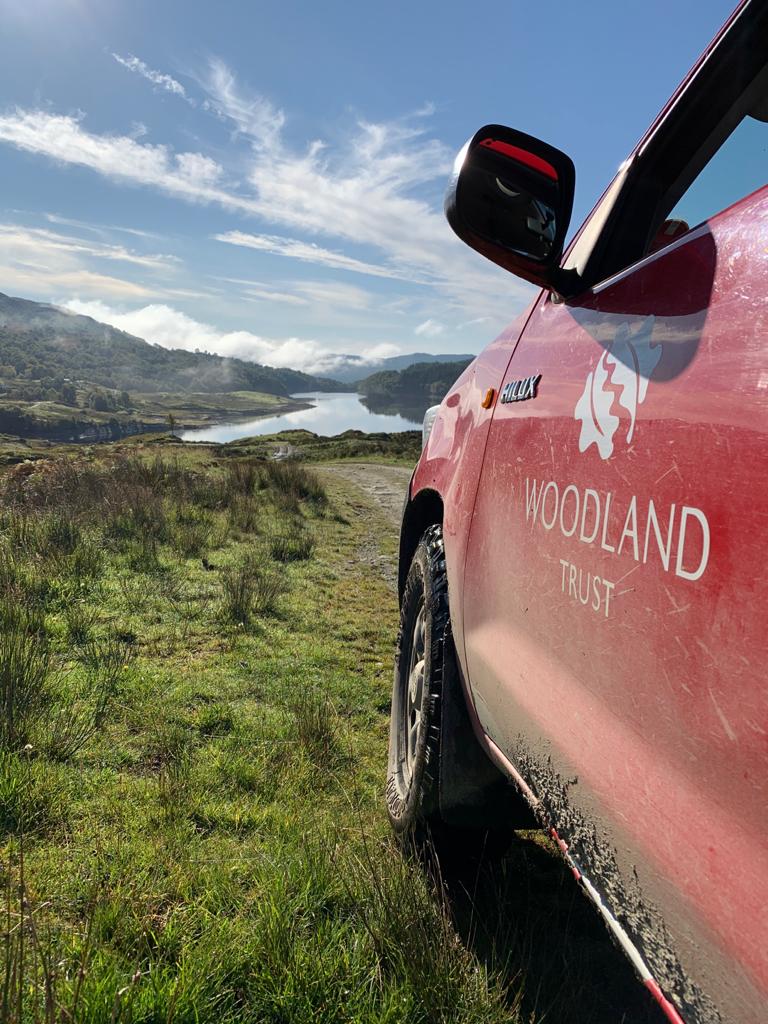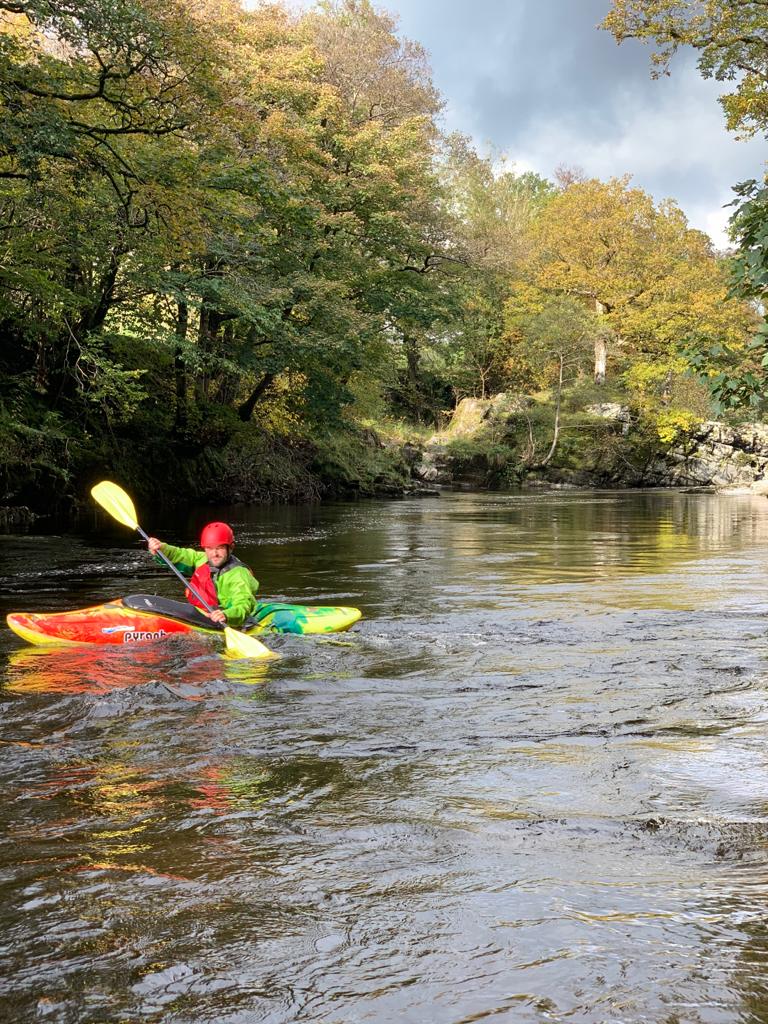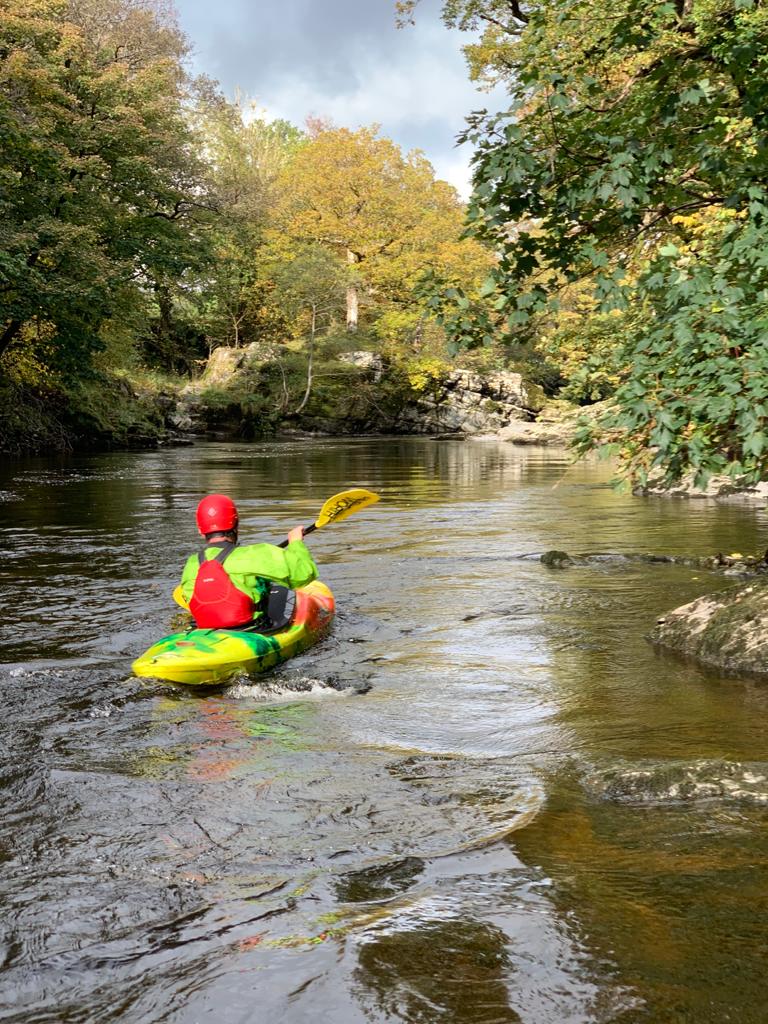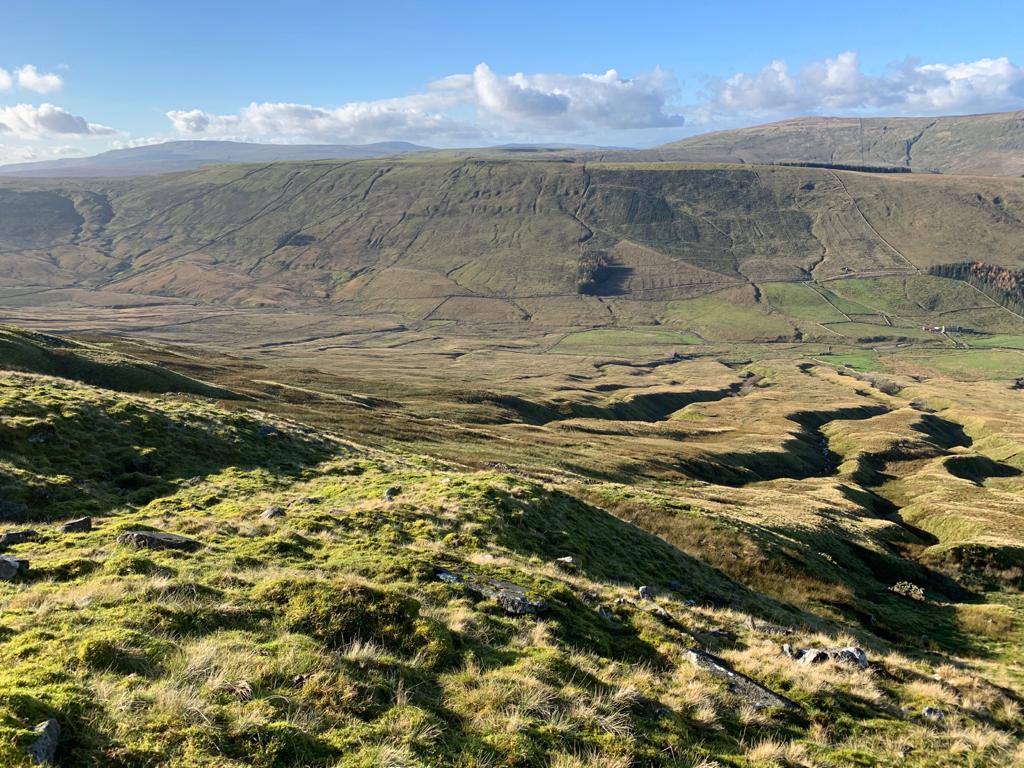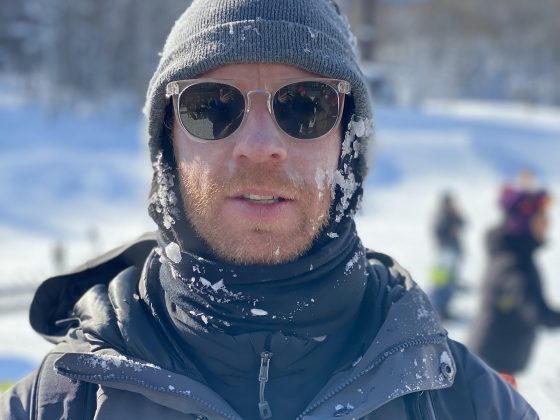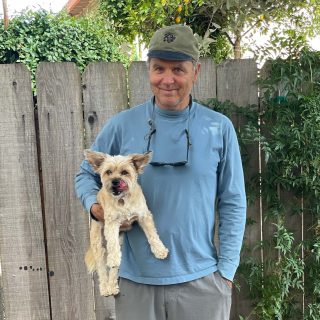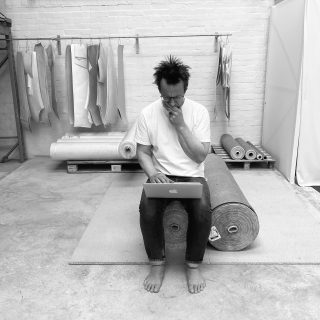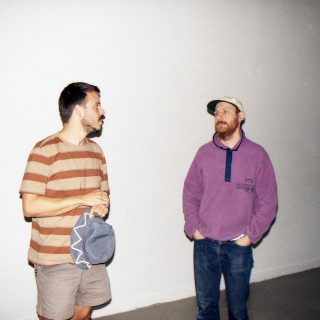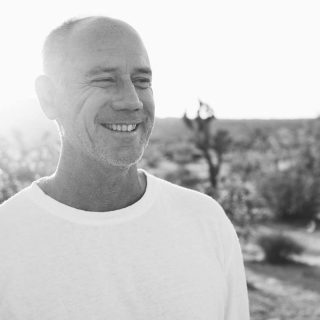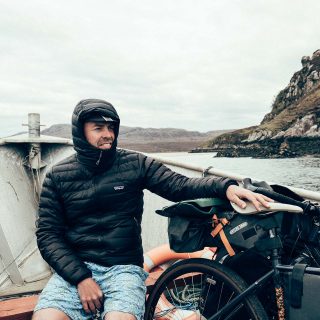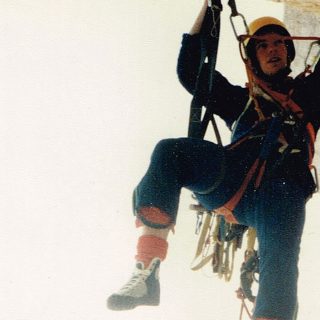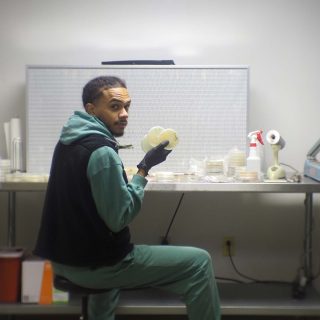An Interview with Alistair Maltby from the Woodland Trust
An in-depth chat about the Woodland’s Trust mammoth Northern Forest project
As some of you might know, at Nativve we’re proud members of 1% for the Planet. This means that every year we give 1% of our revenue to support an environmental nonprofit. This year, we’re donating to the Woodland Trust.
Founded in 1972, the Woodland Trust is the UK’s largest woodland conservation charity, and is dedicated to preserving ancient woodland and giving the public free access to woodland.
They’ve recently launched a new campaign called the Northern Forest—a bold project in which they aim to plant 50 million trees across the north of England over the next 25 years.
We talked with Woodland Trust’s Director of Estate and Woodland Outreach, Alistair Maltby to find out more…
First of all, what is the Woodland Trust? What does it do?
The Woodland Trust started as a grassroots charity back in 1972. Since then it’s grown phenomenally into one of the biggest conservation charities in the UK. Its vision is to have a UK rich in native woods and trees for people and wildlife—and I think that’s never been more important. Only 2.5% of the country is left as ancient woodland, so one of our prime objectives is to protect that, and bring more ancient woodland sites back. On a lot of those sites, the trees were cut down and then planted with conifer plantations—so if we can restore the native trees, we can recover them.
What do you mean by ancient woodland? How is that classified?
I was looking this up the other day. Ancient woodland in England and Wales is an area which has been under continuous woodland cover since 1600, and in Scotland it’s something like 1750. And that’s determined by how far we’ve got maps.
I see—so there might have been trees there for a thousand years before that, or two years before that.
Exactly. With everything that’s happened in the UK, we’re now one of the least wooded areas in the whole world. We’ve lost so much woodland over the years, so actually whilst the target of restoring what we want to restore sounds ambitious, it’d only really be taking us back up to a fairly normal level for Europe. Some countries in Europe have around 30% tree cover, whereas we’re looking to get somewhere in the region of 20%.
Why did it go down so much? Was that to do with industrialisation?
Yeah—the various stages of industrialisation throughout history. I believe woodland cover in the UK reached its lowest point at the end of the First World War as it had been cleared for agriculture.
You get this thing in conservation called the shifting baseline, where each generation sets the baseline of the memory of their youth. And the problem with that is that with each generation, the baseline gets lower.
That seems like a common theme with a lot of things. How does the Woodland Trust work then? Do you own land?
The size of our estate is approaching 30,000 hectares now—we’ve got over a thousand woods—and I think that’s great. In a country dominated by private landowners, to have such an extensive woodland estate that people are free to access is just wonderful.
It’s not easy to find somewhere to go for a walk.
There’s open access land, but much of that is uplands—the mountains—you’ve got to be prepared. And then if you come down into the valleys, it’s farmland that isn’t open access. If you just want to go for a walk, without it being an adventure, the best option is to go to the woods.
Definitely. What’s the Northern Forest project then? I suppose that’s the main thing I wanted to talk to you about.
The Northern Forest project is really exciting. The objective of the Northern Forest is to re-establish 50 million trees over the period of the government’s 25 year environment plan. And this is in a corridor from Liverpool to Hull.
The important thing there is that as part of the investment in the North at the moment, there is £75 billion of infrastructure planned in that corridor, so our objective around the Northern Forest is to make sure that investment in infrastructure is complemented by trees and woodland that help deal with our environmental and social issues.
“If you just want to go for a walk, without it being an adventure, the best option is to go to the woods.”
Every time we build a road or a railway, that captures water on a hard surface, and that water needs to go somewhere. You can either create a dystopian future with everything running into concrete drainage channels, like in Los Angeles, or you can use woods and trees to capture that rainwater and get it into the ground.
And if we’re creating areas for people to use in cities—if we incorporate trees into that built landscape, you’ve got shade and air quality and places for birds. You’re making peoples’ lives more pleasant. It’s not about going backwards, it’s about going forwards. It’s not about creating ancient woodland for a past long-gone.
So that’s the plan—but how do you do it?
A huge element of this is about working with partners. We’re a national charity that works on quite a big scale, but it’s local boots on the ground that do a lot of the hard-work. We’ve got partnerships with all of the community forest trusts that operate in that Northern Forest area. A lot of the local authorities have associated community forests that they work with to do a lot of woodland creation and tree planting.
Manchester has its City of Trees, there’s the Mersey Forest in the Liverpool area, there’s the White Rose Forest around Leeds—so you’ve got these little pockets of community forests. And then we fill in the gaps between them, moving out to the extremes of the Northern Forest area.
And then people can apply for community tree packs, and land owners can get in touch with us directly and we’ll basically fund the majority of costs of them creating a woodland. If they bring the land, we’ll bring the trees.
We’re also now doing a lot with carbon offsetting. We’ll work with people to create woodlands that can be registered with the woodland carbon code—so we can then work with a corporate who is looking to offset their carbon, and bring a payment to that landowner, funding them to create that woodland and maintain it over time.
Subscribe to our newsletter
I see. Is there a danger of being used to clean a company’s conscience a bit there? Are there some corporate companies you wouldn’t want to work with?
That’s a really important issue to raise. One of the things that’s unique about the way the Woodland Trust does this is by going through a very strict process with these companies to make sure they’re offsetting carbon which they can’t reduce through their operations.
So they’re not using you lot as an excuse.
Exactly. We do a lot of risk assessment around it, so if, for example, an oil company was going to come to us to offset their carbon, we’d say no.
Brewdog came to us as part of their mission to become carbon neutral by 2025, which I think they’ve already achieved. But they’d already reduced their carbon footprint as much as they could, and then what’s left, they invested in something that’ll soak up the carbon they’re emitting. And those are the sort of companies we’re keen to work with.
There’s quite a few different ways for you to get to this goal then. I think we’ve talked about it a bit already, but why are trees important?
I think everyone has a connection to trees. I’m not a forester, I didn’t start off in the world of woods and trees—I started off trying to restore rivers and save them from pollution. But it was when I spent three months working the Pacific North-West looking at how climate change was affecting rivers, that’s when it really dawned on me that the thing we were missing in the UK was the relationship between the rivers and the woodland. I came back here and looked at our landscape through a completely different lens. I just thought, “If we bring our woodland and our trees back, we’re going to save our rivers.”
I’ve got a basic understanding of the concept there, but what’s the link exactly?
A lot of our upland areas had trees on them, which have now been cleared, so the vegetation has changed and water runs straight off the land and into the rivers. That’s also changed the soil composition, so water isn’t soaking into the ground anymore. And then the canopy of a woodland creates a microclimate, particularly on the west side of the country where they’re more rainforest-like, so the rivers would rise slower.
Also, as woods and trees deposit themselves into the river, that’s the thing that drives a lot of the process of how the river moves. It slows the river down and it meanders more. The leaf litter also breaks down, to feed the invertebrates, to feed the fish. It just creates a completely different ecosystem.
It creates those smaller, slower rivers, rather than those wide, fast rivers?
Yeah. And it goes all the way along to the seashore. If you go somewhere where this is functioning properly, you’ll see trees washing up on the seashore because they’re doing a function all the way down the river. But a lot of that is impossible for us to do now—our rivers are so well developed and constrained that they’re often actively held in their channel and not allowed to bifurcate and break out onto their floodplains.
“What I’ve realised over the years is that nature knows very well how to manage itself.”
I still think there’s a lot to be gained, particularly in our uplands, from restoring at least some of that ecology. It’ll keep water cleaner, it’ll slow the flow down so we’ve got water at higher levels for longer and it’ll create a habitat for the creatures that want to use it. If you give rivers a space to do what they want to do, it provides a natural way to prevent floods too. The more you hold the river in its channel, the more likely you are to have a catastrophic flood.
There’s a lot to think about then. Something that I think must be very difficult about this kind of thing is that humanity wants to evolve as well. People want more stuff. We can’t go back to the 17th century.
You’re absolutely right. The biggest mistake to make is to frame what we’re doing as somehow going backwards. And that’s why the Northern Forest is exciting to me—we’re trying to frame it in terms of progress.
When I started out working for environmental charities, it was all about managing the environment. But what I’ve realised over the years is that nature knows very well how to manage itself.
What we’ve got to do is really frame the project in the context of what it provides for society in the future. It’s not about creating firewood any more, but it’s about giving a space for people. It’s not going to necessarily be about creating building materials, but it is about carbon capture. It’s not about providing somewhere for people to graze pigs like in the 16th century, but maybe it’s about creating new brown soils from leaf-litter again which is going to be important for the future. It’s about understanding what these future environmental benefits are going to be. Most of the way we manage land at the moment is for a historic view of what the land should provide.
Commercial forestry will always have its place—we’re currently the second biggest importer of timber after China, so we should be growing a lot more at home. And that’s fine for where that’s suitable, but not everywhere is suitable for running commercial forestry on.
It’s finding that balance isn’t it. Understanding everyone’s thing seems to be the real job in all this. Is it hard to be trying to plant all these trees whilst so much redevelopment is taking place? The plans for all these big developments must be at odds with what you’re trying to do a lot of the time.
There are over 12,000 ancient woodlands that are under threat from planning at the moment, so that’s a big role of the Woodland Trust—trying to challenge these applications. These are really precious habitats, so we do a lot to make sure that planning is done with that in mind. We’re not there to stop developments, but we are there to stop developments infringing on ancient woodland.
You’ll have heard we’ve been quite active over HS2, with them taking out a lot of ancient woodland. We’ve recently challenged the developers, who have then changed their plans to give the right kind of buffer between the ancient woodland. Often it just requires talking to people and letting them know.
I suppose these are huge timescales you’re working in. It’s hard to gauge how buildings will be made in 15 or 20 years?
Exactly. So I think we’ve just got to do what we can now, at the best pace we can. I’ve been surprised through my conservation career just how fast woodland is established. There are bits of woodland that I planted 12 years ago which are now starting to look like proper little woods—which I think is incredible. And that’s really rewarding.
How did you get into all this stuff? It seems like something you’re pretty passionate about.
I’ve always loved rivers. I was a kayaker and a fly-fisherman whilst I was at school—we’d always be hanging out by the river. And then I went off to university, studying Medical Science, and I decided I didn’t want to spend the rest of my life in a lab, as I was more of an outdoors person.
So then I got interested in aqua-cultures—fish farming—I thought that’d meet my ambitions of wanting to work outside and being really interested in fish. I genuinely thought at that time that it was a way to feed the world—a sustainable way of delivering food. So I went off and did a Masters Degree in aqua-culture, and very quickly realised that it was just taking intensive agriculture that we’d already made mistakes with on land, and putting it in this really sensitive environment. So I started studying brown trout and wild trout, and that led to my first Rivers Trust job, which was very much about how we bring fish back.
Whilst doing that I realised, along with everyone else, that the problem wasn’t with the fish, but the water, and if it was with the water, it was with the land.
You can’t just drop loads of fish in a river and expect the numbers to stay up.
Yeah, and from there your thinking just gets bigger and bigger. And you realise that that little thing you came into the environment that you tried to fix is linked to the bigger picture and everything else. So you’ve either got to spend your life concentrating on that one thing, knowing that bigger things mean that you’ll never achieve it, or you grasp the nettle—in my case with rivers, realising that it was our landscape.
I’ve often said that by moving to the Woodland Trust I’d have a bigger impact by bringing back woodland at scale than I was ever able to do by working with fish.
As someone who works in the woods all the time, how do you relax and switch-off… do you go for a walk in the woods?
You know what? One of the best things about moving into woodland is being able to enjoy rivers again. It sounds silly, but I’d stopped doing a lot of the river things I enjoyed, like kayaking or fishing, because it felt too much like work. I was seeing problems, or thinking about work.
So doing this has allowed me to enjoy rivers again, and being able to go onto these Woodland Trust sites for work has been a joy. People talk about forest bathing as something relaxing, and I don’t think there’s ever a bad day in the woods.
Yeah—even when it’s raining it’s alright in a forest if there’s a bit of coverage.
We’re definitely a woodland species.
Do you think people need this kind of thing more these days, especially when they spend so much time in the virtual world?
I think it’s more important than ever. If Covid has taught us anything, it’s made a huge number of people remind themselves how important the outdoors is. We’ve lost count of the number of people who’ve told us how much they’ve valued having access to our sites over this time, and my big hope is that they’ll maintain this connection. What do you think? Have you felt that?
Yeah—when everything is closed, people need something to do. A lot of people have been dredging up old bikes or digging out their walking boots. Whether everyone sticks with these things is another thing, but being out and about has still been helpful for a lot of people.
Even if people spend all their time shopping and going to bars, people have learnt their appreciation for these things.
After the Northern Forest project is finished, in 2050, what do you think Britain will look like? What’s your utopian vision of it all?
I’d love to see more of our uplands reforested with naturally regenerating woodland, and that as the cornerstone of our environmental management. I’d also like to feel that trees are much more appreciated back in our agricultural landscape too. When we started the first lock-down, people were talking about food security—but I reflected that in the north of England we’d be food secure as long as you fancy eating lamb and drinking milk. The diverse farms of old have gone, so can agri-forestry help bring back some of those historic products.
And then I’d like to see trees valued in our urban areas too—I’d love to see much more woodland space in urban areas that people can enjoy. Whether it’s to go for a game of frisbee, or go for a bit of semi-urban fell-running—letting people incorporate a bit of nature into our day.
Sounds good. Have you got any wise words to wind this up?
We can often see any kind of environmental initiative in isolation, and pick holes in it—as doing one thing everywhere isn’t going to work. But actually, if I’ve learned anything, it’s understanding how everything is connected. If you want to save rivers, you’ve got to save woodland, and if you want to save birds, you’ve got to save our open spaces. We’ve got to come together to see the big picture.
I see a lot of tension between climate-change advocates and nature advocates at the moment, as lots of things you might do to get a low carbon economy actually impact on nature quite a lot. One of the ones I’ve been involved in a lot is hydro-power—you could dam all of our rivers and make electricity that way, but you’d kill all of our rivers. Or you could take all of our ancient woodland and turn it into fast-rotation coppice for burning in a biomass power station. That might be seen as a low-carbon way of doing stuff, but we’d kill our eco-systems at the same time.
It’s about being accepting of everyone’s vision, and making sure we navigate that to a common cause.
It does feel like a lot of people are trying to catch others out. And that goes for a lot of life at the moment. It’s not very productive.
Yeah—be tolerant and kind to each other. Because whilst we’re bickering between ourselves, people are still extracting large amounts of oil. We often pick the wrong enemies.
It’s not worth getting wound up about someone trying to do something pretty similar.
Exactly. We need to treat each other as allies.
